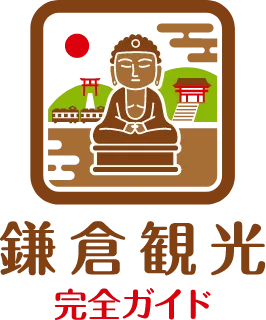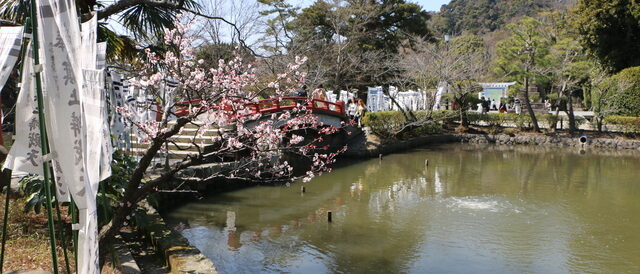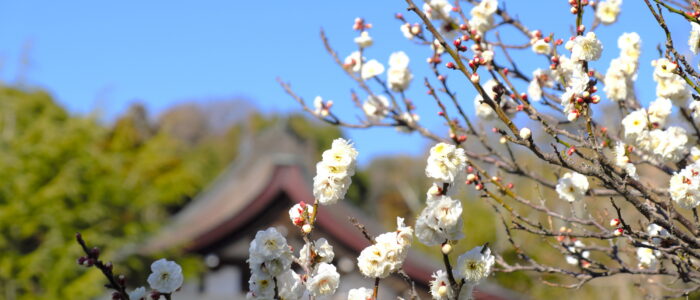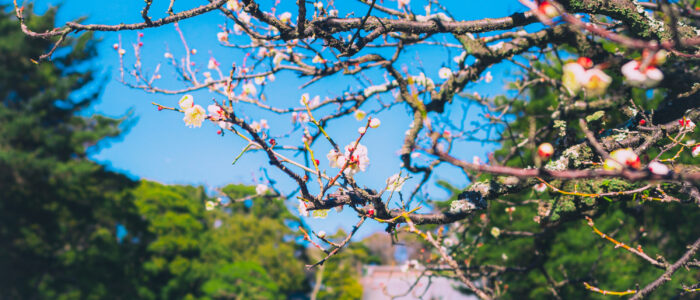Plum Blossoms at Tsurugaoka Hachimangu
The Charm of Plum Blossoms at Tsurugaoka Hachimangu
Tsurugaoka Hachimangu, one of Kamakura’s most iconic shrines, offers beautiful scenery throughout the year. However, during the plum blossom season, the shrine takes on a unique charm with delicate white and pink blossoms blooming in serene beauty throughout the grounds.
Plum Blossoms at Genji Pond and Hataage Benzaiten
The highlights of the plum season are the white plum blossoms around Genji Pond and the pink plum blossoms near Hataage Benzaiten. Each location offers a different ambiance, making a stroll through the shrine grounds even more enjoyable. A tea ceremony area is set up near Genji Pond, allowing visitors to savor matcha while admiring the blossoms.
Best Viewing Period and Recommended Visiting Time
- Late January: The first blossoms start to appear
- Mid-February to mid-March: Full bloom
- Plum trees in front of the Saikan Hall: Best viewed from mid to late February
- Plum trees near Sazare-ishi: Best viewed from mid-March
Additionally, the sight of Japanese white-eyes (Mejiro) feeding on nectar and the early-blooming Kawazu cherry blossoms from mid-March create a stunning seasonal contrast. The simultaneous viewing of plum and cherry blossoms makes it an ideal time to experience the arrival of spring.
History and Poetry of Plum Blossoms
Tsurugaoka Hachimangu has long been associated with the Kamakura shogunate, and plum blossoms have symbolized the arrival of spring since ancient times. The third shogun of the Kamakura shogunate, Minamoto no Sanetomo, composed the following poem:
“Since it bloomed, I have cherished the plum blossom; Now that it scatters, I feel as if I am witnessing my own fate.”
This poem reflects the fleeting beauty of the plum blossoms and the transient nature of life, echoing Sanetomo’s tragic destiny—he was assassinated at Tsurugaoka Hachimangu. Even today, the delicate plum blossoms continue to tell this poignant story.
Visiting Tips
- Matcha Experience at the Tea Ceremony Area: Enjoy a peaceful moment while admiring the blossoms
- Best Time for Photography: Morning light provides stable illumination, making it easier to capture Japanese white-eyes amid the blossoms
- No Nighttime Light-Up: Best visited during the day
- Check Blooming Status in Advance: Weather conditions may affect peak bloom times, so it’s recommended to check the latest updates before visiting
Conclusion
Although Tsurugaoka Hachimangu is not widely known as a famous plum blossom spot, its quiet beauty during the season offers a special and unforgettable experience. If you’re visiting Kamakura in early spring, be sure to stop by and enjoy the serene charm of the plum blossoms.
Toshi’s Evaluation
| Evaluation Criteria | Score | Reason |
|---|---|---|
| Scenic Beauty | 7 | Plum trees are scattered around, particularly near Genji Pond and the Shrine Hall, where white and red plum blossoms can be enjoyed. However, compared to other plum blossom spots in Kamakura (e.g., Zuisen-ji), the scale is smaller. The contrast between the plum blossoms, white-eye birds, and the blue sky is beautiful. |
| Accessibility | 10 | Tsurugaoka Hachimangu is only about a 10-minute walk from Kamakura Station, making it very easy to access for tourists. |
| Historical Value | 9 | As a symbolic shrine of the Kamakura period, it holds significant historical value. The cultural connection between plum blossoms and poetry by Minamoto no Sanetomo further enhances its appeal. |
| Comfort | 8 | While it can get crowded, the area around the Shrine Hall offers a relatively quiet space to enjoy the plum blossoms. Additionally, tea houses serving matcha enhance the comfort of the visit. |
| Reviews | 7 | Online reviews describe it as “modest yet beautiful,” but it is not as popular as other famous plum blossom spots. Its presence on social media is also limited. |
Overall Score: 41 Points
Tsurugaoka Hachimangu’s plum blossoms may be modest in scale, but their historical background and excellent accessibility make them an attractive sightseeing spot. Combining this visit with other locations will enhance the overall experience.



